WOW
SLOW TRAVEL
52 CITIES
1 WEEK
EACH CITY
52 WEEKS
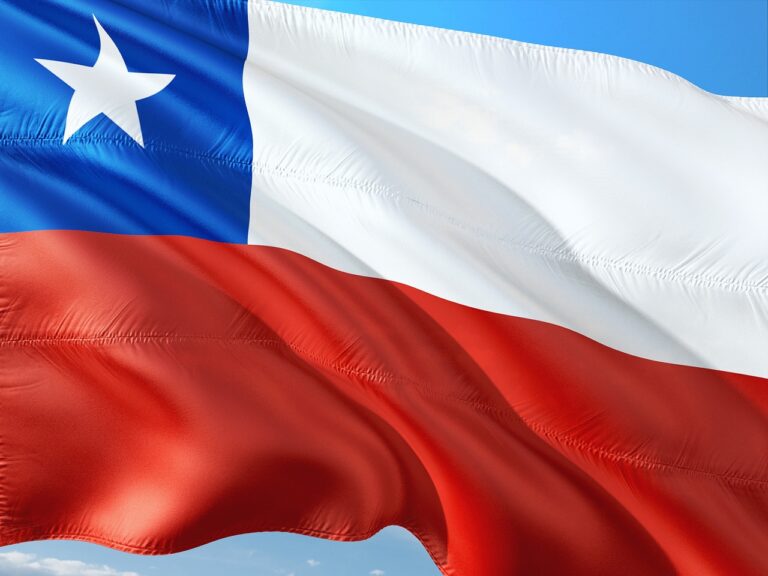
Cities to retire in Chile
Chile offers several attractive cities for American expats looking to retire in a beautiful and welcoming environment. Here are some cities to consider:
Santiago:
As the capital and largest city, Santiago offers a mix of urban conveniences and natural beauty. It has a modern healthcare system and a range of cultural activities.
Santiago is also well-connected, making it easy to explore other regions of Chile.
Valparaíso:
Known for its colorful hillside houses and vibrant street art, Valparaíso offers a unique and bohemian atmosphere.
The city’s coastal location provides breathtaking ocean views, and it has a mild Mediterranean climate.
Viña del Mar:
Often considered a sister city to Valparaíso, Viña del Mar is known for its stunning beaches and relaxed lifestyle.
The city hosts numerous cultural events, including the Viña del Mar International Song Festival.
Concepción:
Located in the Bio-Bio Region, Concepción is known for its cultural scene, universities, and pleasant climate.
It’s a gateway to exploring Chile’s beautiful southern regions and is considered a more affordable option.
La Serena:
La Serena, on Chile’s northern coast, boasts beautiful beaches and a warm climate.
The city offers a tranquil environment, making it a popular choice for retirees seeking a peaceful retirement.
Temuco:
Located in the southern Araucanía Region, Temuco offers a mix of urban amenities and natural beauty.
It’s surrounded by picturesque lakes, forests, and volcanoes, providing ample opportunities for outdoor activities.
Pucón:
For retirees who love the outdoors, Pucón is a paradise. It’s nestled in the Andes and offers access to hiking, skiing, and hot springs.
The town has a small, welcoming community and a more relaxed pace of life.
Puerto Varas:
Situated in the stunning Lake District, Puerto Varas offers breathtaking views of Lake Llanquihue and the Osorno Volcano.
The area is known for its natural beauty, outdoor activities, and a growing expat community.
Valdivia:
Valdivia is known for its rivers, lush forests, and a mild coastal climate. It’s a great place for nature lovers.
The city also has a thriving craft beer scene and cultural events.
Before making a decision, it’s important to consider factors such as visa requirements, healthcare options, cost of living, language proficiency (Spanish is the official language), and proximity to amenities that are important to you. Additionally, visiting potential retirement destinations in Chile beforehand can help you make an informed choice that suits your retirement goals and lifestyle preferences.
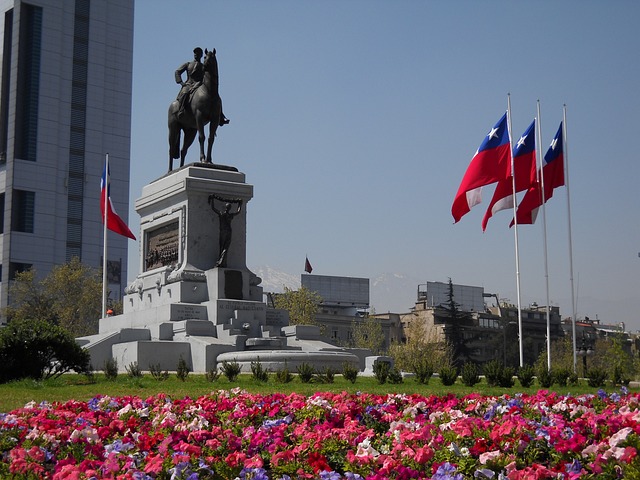
Santiago
Santiago, the capital and largest city of Chile, is a vibrant and cosmopolitan metropolis nestled in a valley surrounded by the Andes Mountains. Known for its rich cultural heritage, modern infrastructure, and stunning natural beauty, Santiago is a dynamic destination that offers a diverse range of experiences. Here’s an overview of this captivating city:
Culture and Heritage:
Santiago is a city with a deep sense of history and culture. The historic center, known as the “Centro,” features colonial-era architecture, including the Metropolitan Cathedral and the Plaza de Armas.
The city is home to numerous museums, art galleries, and cultural centers, such as the Museo de Bellas Artes and the Museo Chileno de Arte Precolombino.
Cuisine:
Chilean cuisine reflects a blend of indigenous, Spanish, and international influences. Santiago’s culinary scene is diverse and offers a wide range of dining options, from street food to fine dining.
Must-try dishes include empanadas, pastel de choclo (a corn pie), and seafood specialties like ceviche and Chilean sea bass.
Parks and Outdoor Activities:
Santiago’s urban parks and green spaces provide residents and visitors with opportunities for outdoor activities. Parque Metropolitano (Metropolitan Park) is a sprawling green oasis atop Cerro San Cristóbal, offering panoramic views of the city.
The nearby Andes Mountains are perfect for hiking, skiing in the winter months, and enjoying the stunning landscapes.
Vibrant Neighborhoods:
Santiago is divided into various neighborhoods, each with its unique character. Providencia and Bellavista are known for their nightlife and cultural attractions, while Las Condes is a more upscale residential area.
Barrio Lastarria is a trendy neighborhood with art galleries, theaters, and stylish boutiques.
Cost of Living:
The cost of living in Santiago can vary, but it’s generally lower than in major American cities. Housing costs, dining out, and everyday expenses are often affordable.
Healthcare:
Santiago offers a high standard of healthcare with modern hospitals and medical facilities. The city is home to some of the best medical institutions in South America, and many healthcare professionals speak English.
Safety:
Santiago is generally considered safe for residents and tourists. However, like any major city, it’s essential to exercise typical safety precautions.
Language:
Spanish is the official language of Chile, including Santiago. While English is not as widely spoken as in some other countries, you can usually find English-speaking individuals, especially in tourist areas and international businesses.
Transportation:
Santiago has an efficient public transportation system, including buses and the Metro de Santiago, which makes it easy to navigate the city.
The city is accessible by air through Comodoro Arturo Merino Benítez International Airport, offering domestic and international flights.
Santiago’s unique blend of history, culture, natural beauty, and modern amenities makes it an attractive destination for tourists, expats, and retirees alike. Whether you’re exploring its historic landmarks, indulging in its diverse cuisine, or taking in the breathtaking views from the Andes, Santiago offers a lively and enriching experience in the heart of Chile.

Valparaíso
Valparaíso, often referred to as “Valpo” by locals, is a charming and colorful coastal city located on the central coast of Chile. It’s renowned for its bohemian atmosphere, vibrant street art, and unique hillside neighborhoods. Here’s an overview of this captivating city:
Hillside Neighborhoods:
Valparaíso is famous for its picturesque hillside neighborhoods, known as “cerros.” These areas are a maze of winding streets, staircases, and colorful houses that climb the steep hills overlooking the Pacific Ocean.
Cerro Alegre and Cerro Concepción are particularly popular with tourists, offering stunning views, boutique shops, cafes, and art galleries.
Street Art:
Valparaíso is often considered a living canvas, with street art and murals adorning its walls and buildings. The city’s street art scene is internationally renowned, attracting artists from around the world.
The annual “Valparaíso Street Art Festival” showcases the city’s creative spirit.
Cultural Heritage:
Valparaíso’s historic center, known as the “Plan,” features colonial-era architecture, including the National Congress building and Plaza Sotomayor.
The city has several museums, including the Museo a Cielo Abierto (Open-Air Museum) and the Museo Naval y Marítimo (Naval and Maritime Museum).
Port and Maritime History:
Valparaíso is a major port city and has played a significant role in Chile’s maritime history. It was declared a UNESCO World Heritage site in 2003 due to its historical and architectural significance.
The city’s port area, once bustling with trade, has been revitalized and now includes restaurants, shops, and cultural spaces.
Nautical Culture:
Valparaíso’s nautical culture is ever-present. The city hosts an annual Naval Week, featuring boat races and maritime-themed events.
The famous “Trolleybuses of Valparaíso” are a unique mode of transportation and an iconic part of the city’s culture.
Cuisine:
Valparaíso offers a diverse culinary scene, with a focus on seafood. You can savor dishes like fresh ceviche, empanadas, and Chilean seafood stews.
The city’s dining options include traditional seafood restaurants and eateries in the vibrant neighborhoods.
Cost of Living:
The cost of living in Valparaíso is generally lower than in major American cities. Housing, dining, and everyday expenses are often affordable, making it an attractive destination for retirees and expats.
Healthcare:
Valparaíso has access to quality healthcare services, including modern hospitals and clinics. Many healthcare professionals in the city are well-trained and offer excellent medical care.
Language:
Spanish is the official language of Chile, including Valparaíso. While English may not be as commonly spoken as in some other places, you can usually find English-speaking staff at tourist establishments.
Safety:
Valparaíso is considered safe for residents and tourists. However, like in any city, it’s important to exercise typical safety precautions, especially in crowded areas.
Transportation:
Valparaíso has a network of buses and funiculars (ascensores) that help residents and visitors navigate the hilly terrain.
The city is accessible by air through Comodoro Arturo Merino Benítez International Airport in nearby Santiago, which offers domestic and international flights.
Valparaíso’s unique blend of artistic expression, maritime history, and stunning hillside neighborhoods make it a one-of-a-kind destination in Chile. Whether you’re wandering through its colorful streets, admiring the street art, or enjoying fresh seafood by the sea, Valparaíso offers a culturally rich and visually captivating experience on the Pacific coast.
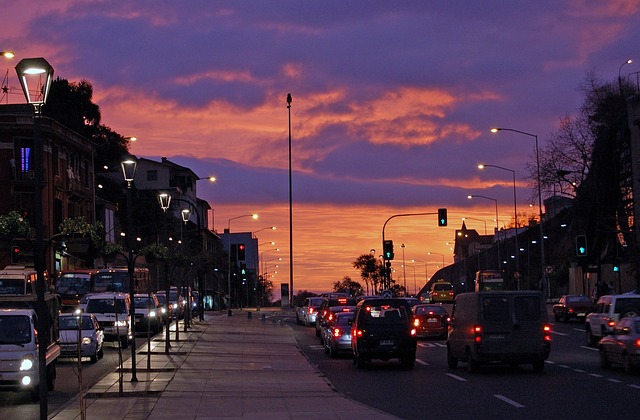
Viña del Mar
Viña del Mar, often referred to as the “Garden City,” is a picturesque coastal city located on the central coast of Chile. Renowned for its beautiful beaches, well-maintained parks, and a relaxed atmosphere, Viña del Mar is a popular destination for both tourists and residents. Here’s an overview of this enchanting city:
Beaches:
Viña del Mar is celebrated for its stunning beaches, including Playa de Caleta Abarca and Playa Acapulco. These beaches feature golden sands and clear waters, perfect for sunbathing and swimming.
The city’s coastline is lined with a scenic promenade, providing opportunities for leisurely strolls and oceanfront dining.
Gardens and Parks:
The city’s nickname, the “Garden City,” is well-deserved. Viña del Mar is adorned with numerous well-kept gardens and parks, including the Quinta Vergara Park and the Sausalito Park.
The Quinta Vergara Park is famous for its beautiful gardens, historic palace, and the annual Viña del Mar International Song Festival.
Cultural Attractions:
Viña del Mar offers a range of cultural attractions, including art galleries, museums, and theaters. The Museo Artequin is known for its collection of Chilean art and educational programs.
The Teatro Municipal (Municipal Theater) hosts a variety of performances, from classical music concerts to theater productions.
Cuisine:
The city’s culinary scene features a blend of traditional Chilean dishes and international cuisine. Seafood is a highlight, with dishes like ceviche, grilled fish, and seafood empanadas.
Dining options range from upscale seafood restaurants to casual eateries along the beachfront.
Cost of Living:
The cost of living in Viña del Mar is generally lower than in major American cities. Housing, dining out, and everyday expenses are often affordable.
Healthcare:
The city has access to quality healthcare services, with modern hospitals and medical facilities. Healthcare professionals in Viña del Mar are well-trained and offer excellent medical care.
Language:
Spanish is the official language of Chile, including Viña del Mar. While English may not be as commonly spoken, you can often find English-speaking staff at tourist establishments.
Safety:
Viña del Mar is considered safe for residents and tourists. However, like in any city, it’s important to exercise typical safety precautions.
Transportation:
Viña del Mar has a well-connected transportation network, including buses and taxis. The city is easily accessible by road from Santiago, and the nearest international airport is Comodoro Arturo Merino Benítez International Airport.
Viña del Mar’s unique blend of natural beauty, cultural attractions, and a laid-back coastal lifestyle makes it an attractive destination for travelers, retirees, and expats seeking a relaxed and scenic environment. Whether you’re lounging on its beautiful beaches, exploring its gardens and parks, or enjoying cultural events, Viña del Mar offers a tranquil and inviting experience on Chile’s central coast.
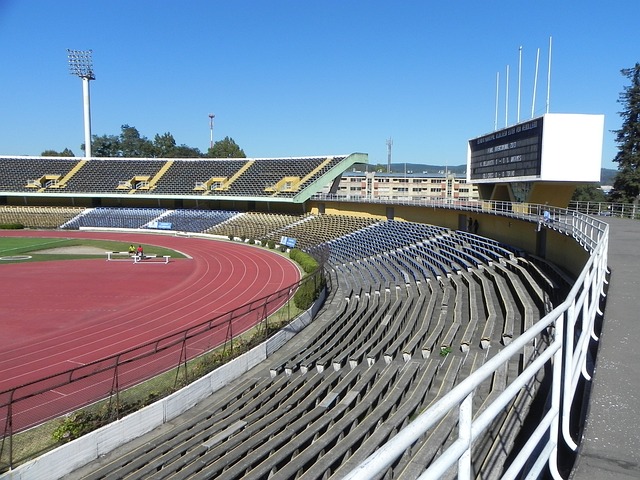
Concepción
Concepción, located in central Chile, is the capital of the Biobío Region and the second-largest city in the country. It is a vibrant urban center with a rich cultural scene, excellent educational institutions, and a strong industrial presence. Here’s an overview of this dynamic city:
Education Hub:
Concepción is often referred to as the “University City” because of its concentration of higher education institutions. The University of Concepción, one of Chile’s top universities, is located here.
The city’s educational offerings and research facilities attract students and academics from across Chile and around the world.
Cultural Scene:
Concepción has a thriving cultural scene with theaters, art galleries, and music venues. The Universidad de Concepción hosts numerous cultural events, including concerts and art exhibitions.
The city’s Casa del Arte hosts a diverse range of cultural performances, from theater productions to dance shows.
Cuisine:
Chilean cuisine is celebrated in Concepción, and you can savor traditional dishes like empanadas, pastel de choclo (a corn pie), and fresh seafood, given its coastal location.
Concepción’s Mercado Central is a bustling food market where you can taste local specialties and fresh produce.
Natural Beauty:
The city is surrounded by natural beauty, with picturesque landscapes, rivers, and forests. Parque Ecuador is a central green space perfect for outdoor activities and relaxation.
The nearby Bio Bío River offers opportunities for water sports and scenic riverfront walks.
Cost of Living:
The cost of living in Concepción is generally lower than in major American cities. Housing, dining out, and everyday expenses are often affordable.
Healthcare:
Concepción has a well-developed healthcare system, with modern hospitals and medical facilities. Healthcare professionals in the city are highly trained and offer quality medical care.
Language:
Spanish is the official language of Chile, including Concepción. While English may not be as commonly spoken as in some other places, you can often find English-speaking staff at international establishments.
Safety:
Concepción is considered relatively safe for residents and tourists, but it’s important to exercise typical safety precautions, especially in urban areas.
Transportation:
The city has a public transportation system, including buses and taxis, making it easy to get around.
Concepción is accessible by air through Carriel Sur International Airport, offering domestic and limited international flights.
Concepción’s unique blend of academic excellence, cultural richness, and natural beauty makes it an attractive destination for students, professionals, retirees, and expats looking for a vibrant and welcoming urban environment in Chile. Whether you’re exploring its cultural offerings, enjoying local cuisine, or taking in the natural scenery, Concepción offers a lively and enriching experience in the heart of the Biobío Region.
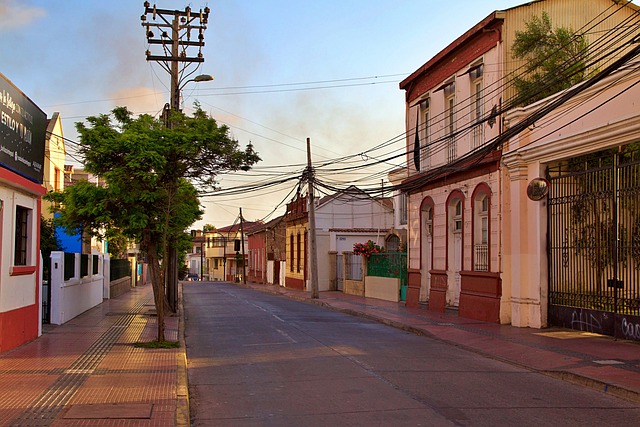
La Serena
La Serena, a picturesque coastal city located in northern Chile, is known for its stunning beaches, clear skies, and a laid-back atmosphere. It’s the capital of the Coquimbo Region and offers a unique blend of natural beauty, cultural heritage, and a relaxed coastal lifestyle. Here’s an overview of this enchanting city:
Beaches:
La Serena boasts some of the most beautiful beaches in Chile, including Playa El Faro and Playa Cuatro Esquinas. These beaches feature golden sands and gentle waves, ideal for swimming, sunbathing, and water sports.
The city’s beachfront promenade, Avenida del Mar, offers a scenic route for leisurely walks or bike rides.
Stargazing Capital:
La Serena is often referred to as the “Stargazing Capital of the World.” It’s surrounded by several observatories and boasts exceptionally clear skies, making it a prime destination for astronomy enthusiasts.
The Cerro Tololo Inter-American Observatory and the La Silla Observatory are nearby and offer guided tours and stargazing experiences.
Cultural Heritage:
The city has a well-preserved historic center with colonial architecture, including the Iglesia de San Francisco and the Plaza de Armas.
La Serena is known for its historic lighthouse, Faro Monumental, which has become a symbol of the city.
Cuisine:
La Serena’s cuisine is influenced by its coastal location, with a focus on fresh seafood. Visitors can enjoy dishes like ceviche, empanadas, and Chilean seafood stews.
The city’s beachfront restaurants offer a perfect setting for savoring the local cuisine.
Natural Beauty:
The surrounding region of La Serena is characterized by stunning natural landscapes, including Elqui Valley, known for its vineyards and clear skies, and Fray Jorge National Park, a UNESCO Biosphere Reserve with a unique forest ecosystem.
Outdoor enthusiasts can enjoy activities like hiking, horseback riding, and water sports in the region.
Cost of Living:
The cost of living in La Serena is generally lower than in major American cities. Housing, dining out, and everyday expenses are often affordable.
Healthcare:
La Serena has access to quality healthcare services, with modern hospitals and medical facilities. Many healthcare professionals in the city speak English, which can be reassuring for expats.
Language:
Spanish is the official language of Chile, including La Serena. While English may not be as commonly spoken, you can often find English-speaking staff at tourist establishments.
Safety:
La Serena is considered safe for residents and tourists, but it’s important to exercise typical safety precautions, especially in crowded areas.
Transportation:
The city has a public transportation system, including buses and taxis, making it convenient to get around.
La Serena is accessible by air through La Florida Airport, which offers domestic flights.
La Serena’s unique combination of natural beauty, stargazing opportunities, cultural heritage, and a relaxed coastal lifestyle makes it an attractive destination for travelers, retirees, and expats seeking a tranquil and scenic environment in northern Chile. Whether you’re lounging on its beautiful beaches, exploring its historic landmarks, or gazing at the stars in the clear desert sky, La Serena offers a warm and inviting experience on Chile’s northern coast.

Temuco
Temuco, located in southern Chile’s Araucanía Region, is a charming and culturally rich city known for its natural beauty, indigenous heritage, and outdoor recreational opportunities. It serves as a gateway to exploring the picturesque landscapes of southern Chile. Here’s an overview of this captivating city:
Natural Beauty:
Temuco is surrounded by stunning natural landscapes, including lush forests, picturesque lakes, and majestic volcanoes. The region’s natural beauty provides numerous opportunities for outdoor activities such as hiking, skiing, and fishing.
Villarrica Volcano, one of the region’s most iconic landmarks, is a popular destination for climbing and offers breathtaking panoramic views.
Indigenous Culture:
The Araucanía Region is home to the Mapuche people, one of Chile’s indigenous groups. Visitors can learn about Mapuche culture and traditions through cultural centers, festivals, and artisan markets.
The city itself features Mapuche-inspired architecture and artwork, paying homage to the indigenous heritage.
Cuisine:
The region’s cuisine is influenced by its agricultural surroundings, offering fresh and flavorful dishes. Try traditional Chilean favorites like pastel de choclo (a corn pie) and curanto (a seafood stew).
The city’s Mercado Municipal is a vibrant food market where you can sample local specialties.
Cultural Attractions:
Temuco has several cultural attractions, including museums, theaters, and art galleries. The Museo Regional de la Araucanía provides insight into the region’s history and culture.
The city hosts cultural events, including traditional Mapuche ceremonies and celebrations.
Cost of Living:
The cost of living in Temuco is generally lower than in major American cities. Housing, dining out, and everyday expenses are often more affordable.
Healthcare:
Temuco offers quality healthcare services, with modern hospitals and medical facilities. Healthcare professionals in the city are well-trained and provide excellent medical care.
Language:
Spanish is the official language of Chile, including Temuco. While English may not be as commonly spoken as in some other places, you can often find English-speaking staff at tourist establishments.
Safety:
Temuco is considered safe for residents and tourists, but it’s essential to exercise typical safety precautions, especially when exploring natural areas.
Transportation:
The city has a public transportation system, including buses and taxis, making it convenient to get around.
Temuco is accessible by air through La Araucanía International Airport, which offers domestic flights.
Temuco’s unique blend of natural beauty, indigenous culture, and outdoor adventures makes it an attractive destination for travelers, retirees, and expats seeking a peaceful and authentic Chilean experience. Whether you’re exploring the region’s stunning landscapes, immersing yourself in Mapuche traditions, or savoring local cuisine, Temuco offers a warm and inviting atmosphere in the heart of southern Chile.
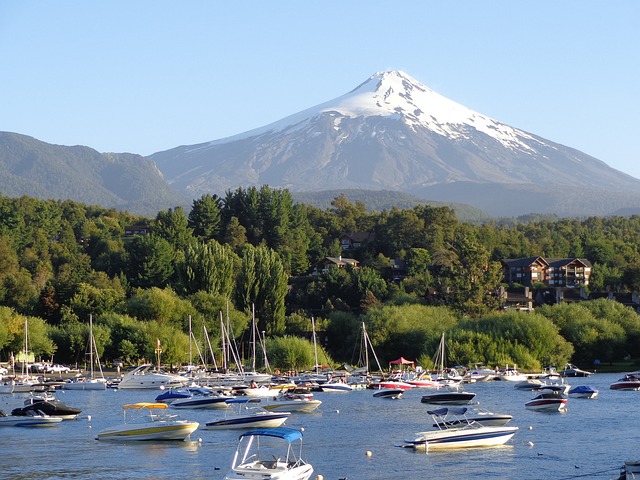
Pucón
Pucón, nestled in the heart of Chile’s Lake District, is a picturesque and adventure-filled destination known for its stunning natural landscapes, outdoor activities, and the iconic Villarrica Volcano. Whether you’re seeking adrenaline-pumping adventures or serene moments in nature, Pucón offers a wide range of experiences. Here’s an overview of this enchanting town:
Villarrica Volcano:
Pucón’s most prominent feature is the Villarrica Volcano, an active stratovolcano that draws hikers and climbers from around the world. Ascending to its summit is a challenging but rewarding experience, offering breathtaking views of the region.
During the winter months, the volcano becomes a popular destination for skiing and snowboarding.
Adventure Capital:
Pucón is often referred to as the “Adventure Capital of Chile” due to the abundance of outdoor activities available. You can go white-water rafting, kayaking, canyoning, zip-lining, and horseback riding.
The Huerquehue National Park, nearby, offers hiking trails through lush forests leading to pristine mountain lakes.
Lake Villarrica:
Lake Villarrica, which the town is situated on, provides opportunities for swimming, sailing, and fishing. Many visitors enjoy cruising on the lake to appreciate the surrounding landscapes.
The lake’s clear waters and sandy beaches are perfect for relaxation on sunny days.
Hot Springs:
Pucón is famous for its natural hot springs, such as Termas Geométricas and Termas Los Pozones. These soothing thermal baths are nestled in beautiful settings, allowing you to unwind and take in the surrounding nature.
Cuisine:
The town offers a variety of dining options, from traditional Chilean dishes like pastel de choclo (a corn pie) to international cuisine. You can also enjoy fresh seafood from nearby lakes and rivers.
Pucón’s restaurants and cafes often have stunning views of the Villarrica Volcano.
Cost of Living:
The cost of living in Pucón can vary depending on the season. During peak tourist times, prices for accommodation and activities may be higher. However, it’s generally more affordable than major American cities.
Language:
Spanish is the official language of Chile, including Pucón. While English may not be as commonly spoken, you can usually find English-speaking staff at tourist establishments.
Safety:
Pucón is considered safe for residents and tourists. However, adventure activities, especially those involving outdoor sports, should be undertaken with caution and with certified guides.
Transportation:
The town has a well-connected transportation network, including buses and taxis. Pucón is accessible by road from cities like Temuco and Santiago.
The nearest major airport is La Araucanía International Airport in Temuco.
Pucón’s unique blend of outdoor adventures, stunning natural beauty, and relaxation opportunities make it an ideal destination for thrill-seekers, nature enthusiasts, and travelers looking to escape into the heart of Chile’s Lake District. Whether you’re conquering the Villarrica Volcano, soaking in hot springs, or simply taking in the breathtaking scenery, Pucón offers an exhilarating and rejuvenating experience in the heart of Chile’s southern wilderness.
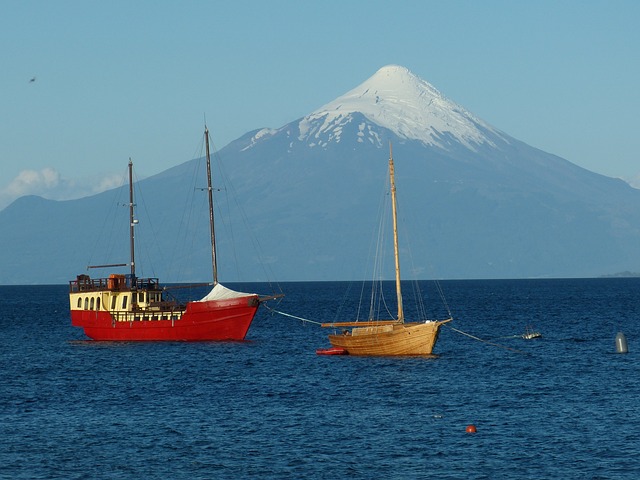
Puerto Varas
Puerto Varas, often referred to as the “City of Roses,” is a captivating town nestled in Chile’s Lake District. Known for its stunning natural landscapes, charming architecture, and German heritage, Puerto Varas is a picturesque destination that offers a perfect blend of relaxation and outdoor adventures. Here’s an overview of this enchanting town:
Llanquihue Lake:
Puerto Varas is situated on the shores of Lake Llanquihue, one of Chile’s largest and most beautiful lakes. The lake provides opportunities for kayaking, sailing, fishing, and swimming.
The surrounding landscapes, including the Osorno and Calbuco volcanoes, offer breathtaking views and hiking trails.
German Heritage:
The town’s architecture and cultural influence reflect its German heritage, dating back to the 19th century when German immigrants settled in the region. You can see this influence in the charming wooden houses and local cuisine.
Don’t miss the iconic white-steepled church, Iglesia Sagrado Corazón de Jesús, located on a hill with panoramic views of the lake and volcanoes.
Outdoor Activities:
Puerto Varas is a hub for outdoor enthusiasts. You can explore nearby national parks, such as Vicente Pérez Rosales National Park, which boasts lush forests, waterfalls, and the Petrohué River with its emerald-green waters.
The region offers hiking, mountain biking, horseback riding, and bird-watching opportunities.
Cuisine:
The town’s culinary scene showcases a fusion of Chilean and German influences. Traditional dishes include kuchen (a type of cake), curanto (a seafood and meat stew), and hearty German-style sausages.
Many restaurants offer lakefront dining with stunning views.
Cost of Living:
The cost of living in Puerto Varas is generally lower than in major American cities. Housing, dining out, and everyday expenses are often affordable.
Language:
Spanish is the official language of Chile, including Puerto Varas. While English may not be as commonly spoken, you can often find English-speaking staff at tourist establishments.
Safety:
Puerto Varas is considered safe for residents and tourists. However, it’s essential to exercise typical safety precautions, especially when engaging in outdoor activities.
Transportation:
The town has a well-connected transportation network, including buses and taxis. It’s accessible by road from cities like Puerto Montt and Santiago.
El Tepual Airport in Puerto Montt provides domestic and limited international flights, making it the nearest major airport.
Puerto Varas’s unique combination of natural beauty, cultural heritage, and outdoor adventures makes it an attractive destination for travelers, retirees, and expats looking to immerse themselves in Chile’s stunning Lake District. Whether you’re exploring its national parks, savoring local cuisine, or admiring the picturesque landscapes, Puerto Varas offers a tranquil and visually captivating experience in the heart of Chile’s southern wilderness.
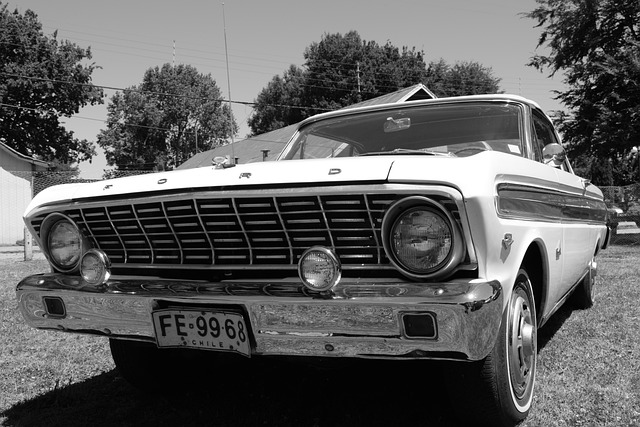
Valdivia
Valdivia, located in southern Chile’s Los Ríos Region, is a charming and culturally rich city renowned for its natural beauty, rivers, and lush landscapes. Often called the “Pearl of the South,” Valdivia offers a unique blend of history, outdoor adventures, and a welcoming atmosphere. Here’s an overview of this captivating city:
River Culture:
Valdivia is situated at the confluence of the Calle-Calle River and the Valdivia River, which eventually flow into the Pacific Ocean. These rivers are central to the city’s identity and offer opportunities for boat tours, kayaking, and fishing.
The city’s riverside promenades and bridges provide scenic views and picturesque walks.
Historical Heritage:
Valdivia has a rich history, and you can explore its colonial past through its historic buildings and museums. The city’s downtown area features well-preserved architecture from the 19th and early 20th centuries.
The Fortresses of Valdivia, a series of historic fortifications, are a UNESCO World Heritage site and offer a glimpse into the city’s defensive history.
Cuisine:
The region’s cuisine is influenced by its coastal location and agricultural surroundings. Fresh seafood, including salmon and shellfish, is a highlight. Try traditional dishes like curanto (a seafood and meat stew) and milcaos (potato pancakes).
Valdivia’s Mercado Fluvial is a bustling market where you can sample local specialties and purchase fresh produce.
Natural Beauty:
Valdivia is surrounded by natural beauty, with lush forests, rivers, and nearby coastal areas. The nearby Oncol Park offers hiking trails through a pristine forested landscape.
The nearby coastal town of Niebla features beaches and a historic Spanish fort.
Cost of Living:
The cost of living in Valdivia is generally lower than in major American cities. Housing, dining out, and everyday expenses are often more affordable.
Language:
Spanish is the official language of Chile, including Valdivia. While English may not be as commonly spoken, you can usually find English-speaking staff at tourist establishments.
Safety:
Valdivia is considered safe for residents and tourists. However, it’s important to exercise typical safety precautions, especially when exploring natural areas.
Transportation:
The city has a well-connected transportation network, including buses and taxis. Valdivia is accessible by road from cities like Santiago and Puerto Montt.
The nearest major airport is Pichoy Airport, offering domestic flights.
